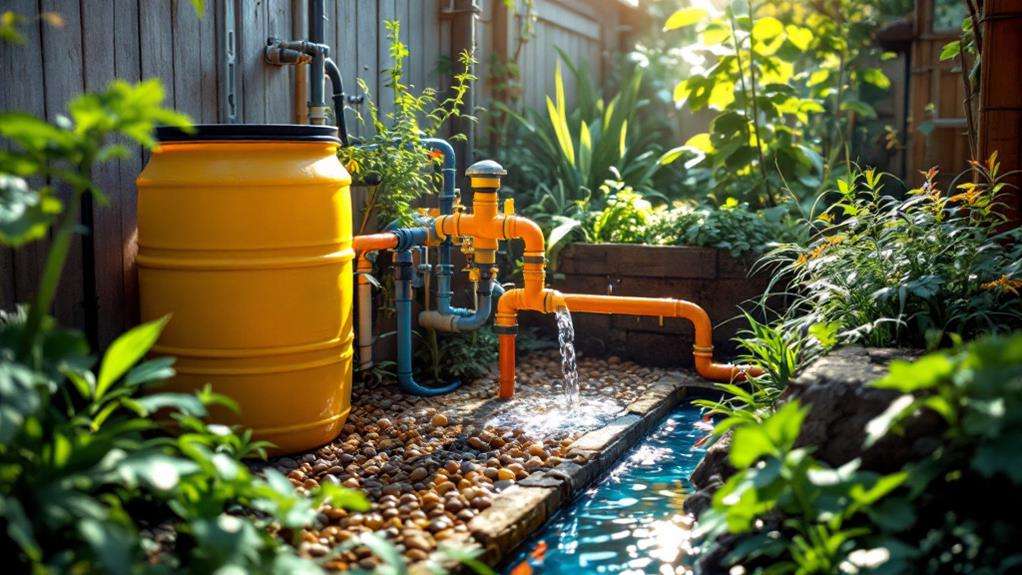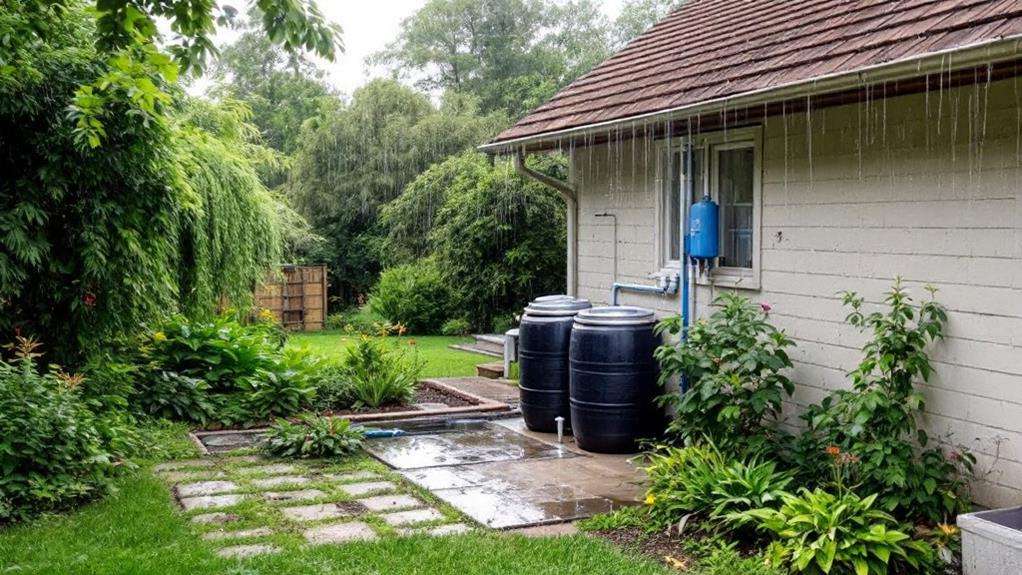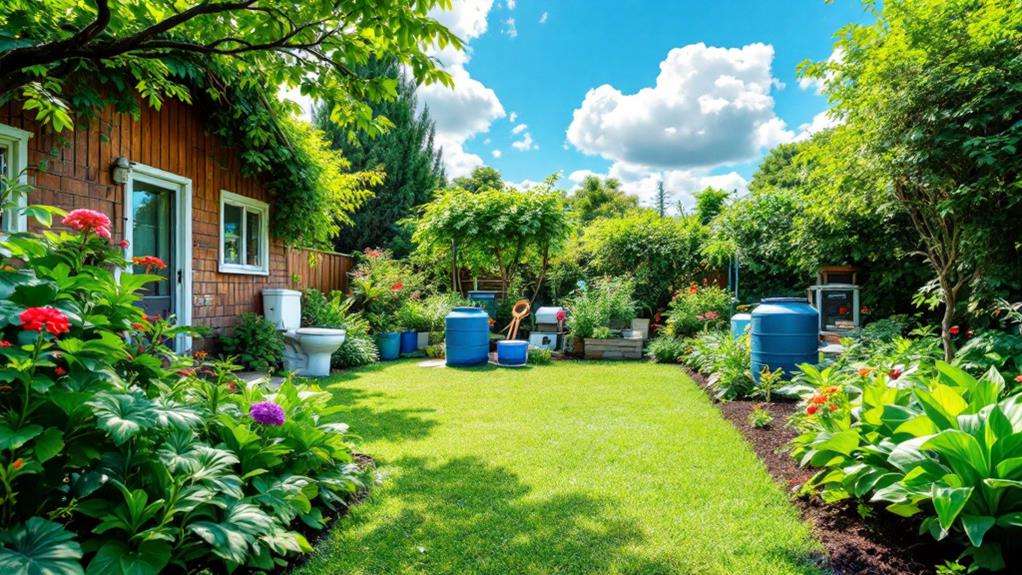Eco-Friendly Ways to Dispose of Wastewater at Home

You can implement several eco-friendly methods to dispose of wastewater at home. Consider installing a greywater recycling system to treat and reuse water from sinks, showers, and washing machines. Composting toilets offer a waterless alternative that turns waste into nutrient-rich compost. Rainwater harvesting systems collect and store rainwater for non-potable uses. Natural filtration methods like constructed wetlands or sand filters can effectively treat greywater. Don't forget simple water-saving practices like fixing leaks and using low-flow fixtures. By adopting these techniques, you'll reduce your environmental impact and potentially lower your water bills. Examine these options to investigate which solutions best fit your home and lifestyle.
Greywater Recycling Systems
Greywater recycling systems are one of the most effective ways to reuse wastewater at home. These systems collect and treat water from sinks, showers, and washing machines, allowing you to repurpose it for non-potable uses like irrigation or toilet flushing. By implementing a greywater system, you'll drastically reduce your household's water consumption and lower your utility bills.
The greywater reuse benefits extend beyond financial savings. You'll be conserving precious freshwater resources and reducing the strain on municipal water treatment facilities. To get started, you'll need to choose from various greywater treatment techniques. Simple systems may involve diverting water directly to your garden, while more complex setups can include filtration and disinfection processes.
When installing a greywater system, consider factors like your local regulations, the volume of water you generate, and your intended reuse purposes. You'll need to use biodegradable soaps and avoid harsh chemicals to ascertain the recycled water is safe for plants and soil. With proper maintenance and responsible use, a greywater recycling system can be an excellent eco-friendly solution for managing your household's wastewater.
Composting Toilets
While greywater systems focus on reusing water from sinks and showers, composting toilets offer another innovative approach to managing household waste. These eco-friendly alternatives to traditional flush toilets use biological processes to break down human waste into compost, reducing water usage and environmental impact.
You'll find two main types of composting toilets: waterless composting and low flow composting. Waterless composting toilets don't use any water, relying instead on natural decomposition processes. You'll need to add carbon-rich materials like sawdust or coconut coir after each use to aid in decomposition and control odors. Low flow composting toilets use minimal water to flush waste into a composting chamber, where it's broken down similarly to waterless systems.
Both types separate liquid and solid waste, allowing for more efficient composting. The end product is a nutrient-rich compost that can be safely used in your garden for non-edible plants. By installing a composting toilet, you'll greatly reduce your water consumption and create an impactful resource from what would otherwise be waste. It's an excellent option for eco-conscious homeowners looking to minimize their environmental footprint.
Rainwater Harvesting

Rainwater harvesting offers a simple yet effective method for conserving water and reducing your household's environmental impact. By collecting and storing rainwater, you'll have a sustainable water source for various non-potable uses, such as watering your garden, flushing toilets, or washing your car.
To implement a rainwater harvesting system, start by installing gutters and downspouts on your roof to direct water into a storage tank or cistern. You can use above-ground tanks or underground systems, depending on your available space and local regulations. Consider incorporating permeable surfaces around your property to allow excess rainwater to seep into the ground naturally, replenishing groundwater supplies.
Creating rain gardens is another excellent way to manage rainwater runoff. These shallow depressions filled with native plants and soil help filter pollutants and slow down water flow, allowing it to infiltrate the ground. You can strategically place rain gardens near downspouts or in low-lying areas of your yard.
Remember to maintain your rainwater harvesting system regularly by cleaning gutters, filters, and tanks to guarantee optimal performance and water quality. By implementing these eco-friendly practices, you'll contribute to water conservation efforts and reduce strain on municipal water supplies.
Natural Filtration Methods
Several natural filtration methods can effectively treat wastewater at home, reducing your environmental impact and conserving water resources. One popular approach is using constructed wetlands, which mimic natural ecosystems to filter and purify water. You can create a small-scale wetland in your yard by planting water-loving plants in a gravel-filled basin. As wastewater flows through this system, the plants and microorganisms remove pollutants and excess nutrients.
Another effective technique is phytoremediation, which uses specific plants to absorb and break down contaminants in water. You can implement this method by creating a bioretention area or rain garden filled with native plants known for their ability to filter pollutants. Some effective plants for phytoremediation include cattails, bulrushes, and certain types of willows.
You can also consider installing a sand filter system, which uses layers of sand and gravel to remove particles and impurities from wastewater. This method is particularly effective for treating greywater from sinks, showers, and washing machines. By incorporating these natural filtration methods into your home's wastewater management system, you'll contribute to a healthier environment while potentially reducing your water bills.
Water-Saving Household Practices

Implementing water-saving practices in your home is an important step in reducing wastewater generation. By adopting efficient water usage habits, you'll not only minimize your environmental impact but also save money on utility bills. Water conservation techniques can be easily incorporated into your daily routine, making a significant difference in the long run.
- Install low-flow fixtures: Replace old faucets, showerheads, and toilets with water-efficient models to reduce water consumption without sacrificing functionality.
- Fix leaks promptly: Regularly inspect your plumbing for leaks and repair them immediately to prevent unnecessary water waste.
- Collect and reuse greywater: Capture water from activities like washing vegetables or rinsing dishes to water plants or clean outdoor areas.
- Use appliances wisely: Run dishwashers and washing machines only when full, and choose water-efficient models when replacing old appliances.
